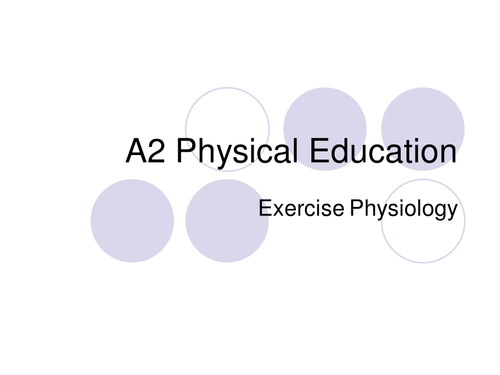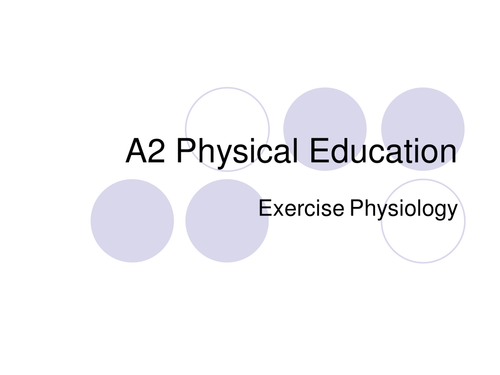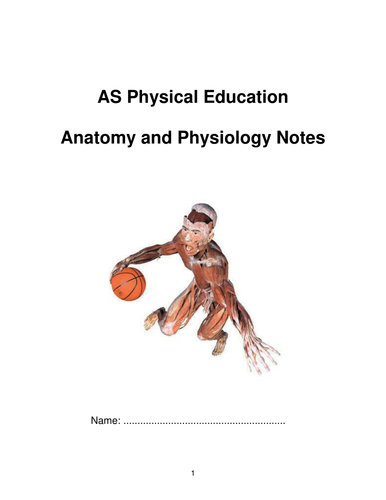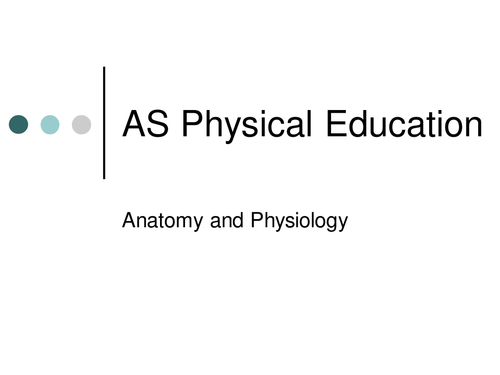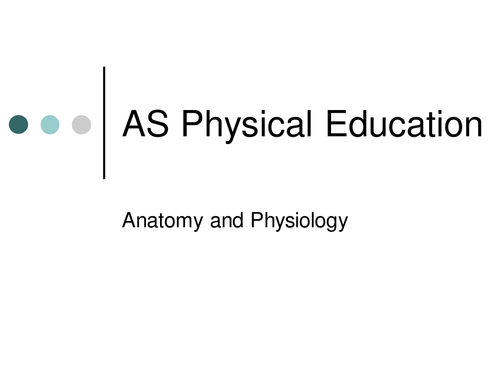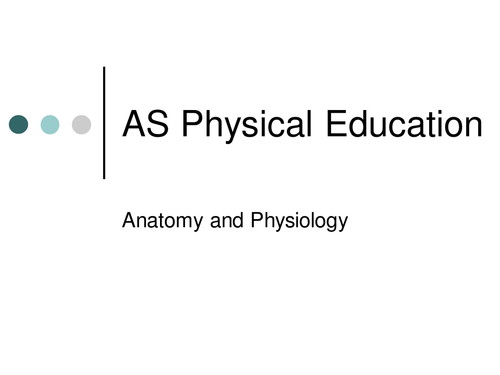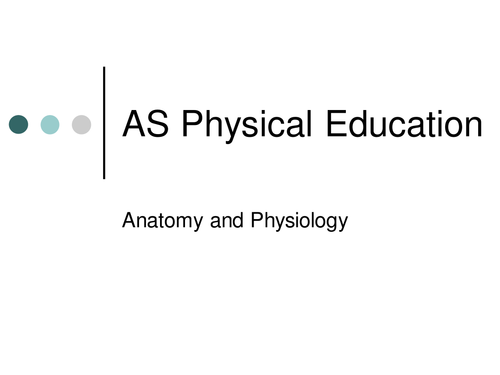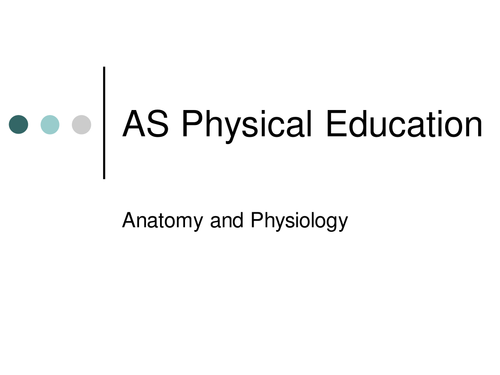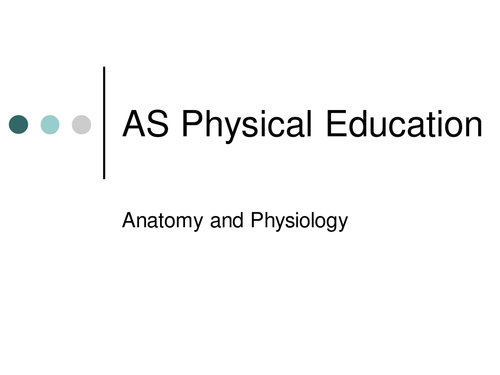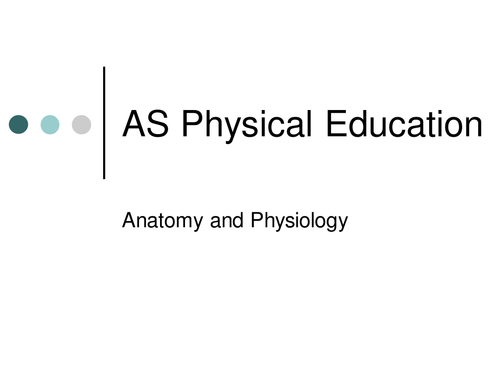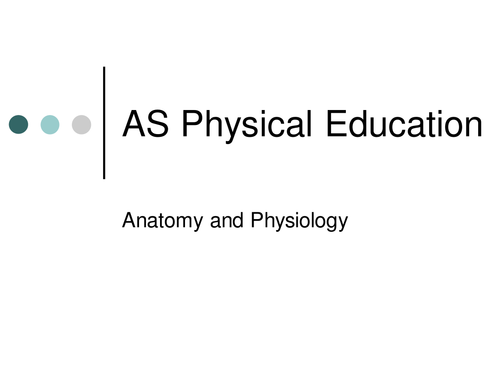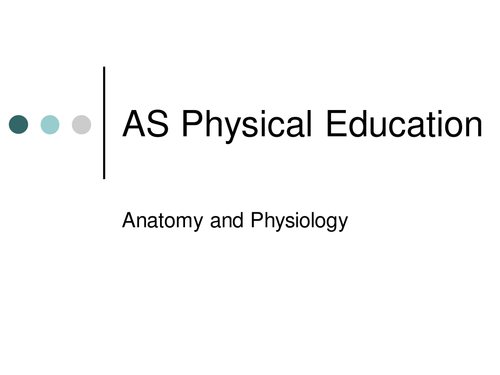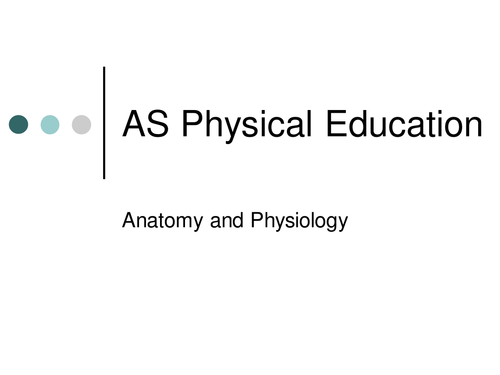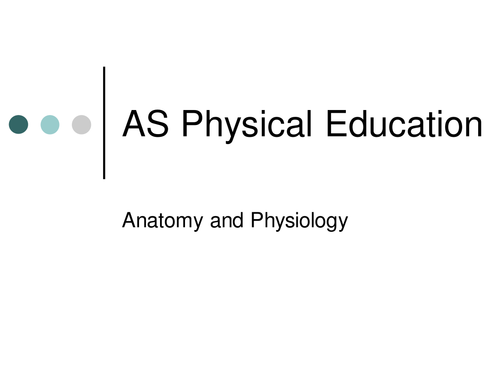
118Uploads
37k+Views
4k+Downloads
Physical education
Sale

A level PE - Energy Systems & ATP
A Level Exercise Physiology lesson. Learning objectives:
- Describe the breakdown and re-synthesis of ATP.
- Introduce the three energy systems used to supply ATP to working muscles.
- Explain how duration and intensity of exercise for relates to each energy systems.
Sale

A Level PE - Energy, Work and Power & ATP
A Level Exercise Physiology lesson. Learning objectives:
- To define the terms ‘energy’, ‘work’ and ‘power’.
- Identify examples of potential, chemical and kinetic energy.
- Introduce ATP.
Sale

Anatomy Physiology Student Work Book
A Level Physical Education Resource
This resource coincides with the set of PowerPoints which, will assist the delivery of the AS Anatomy and Physiology A Level Unit for the OCR specification. The student notebook contains: exam check lists; notes; tasks; exam questions and exam answers.
The resource represents two years worth of work and I can guarantee that it will make teaching this unit much easier. I only wish that I had this when I first started teaching the Sports Science units.
This is a perfect resource for anyone starting out teaching the Sports Science aspect of A Level Physical Education.
Sale

A Level PE - Respiratory System and an Active Lifestyle
A Level Anatomy and Physiology lesson. Learning objectives:
- Explain the effects of altitude on the respiratory system.
- Identify how altitude training may positively and negatively influence performance.
Sale

A Level PE - Effect of Altitude on the Respiratory System
A Level Anatomy and Physiology lesson. Learning objectives:
- Explain the effects of altitude on the respiratory system.
- Identify how altitude training may positively and negatively influence performance.
Sale

A Level PE - Control of Breathing
A Level Anatomy and Physiology lesson. Learning objectives:
- Describe the ventilatory response to light, moderate and heavy exercise.
- Explain how breathing is controlled through the use of the Respiratory Control Centre.
Sale

A Level PE - Gaseous Exchange
A Level Anatomy and Physiology lesson. Learning objectives:
- Describe the process that takes place during External and Internal Respiration.
- Introduce Partial Pressure and its impact on Gaseous Exchange.
- Explain the changes in Gaseous Exchange due to exercise.
Sale

A level PE - The Mechanics of Breathing
A Level Anatomy and Physiology lesson. Learning objectives:
- Describe the mechanics of breathing at rest and the respiratory muscles involved.
- Explain the changes in the mechanics of breathing during physical activity.
- Introduce respiratory volumes at rest and during exercise.
Sale

A Level PE - Respiratory Structures
A Level Anatomy and Physiology lesson. Learning objectives:
- Introduce the Respiratory System structure and function.
- Identify the location of gas exchange and how this process occurs.
Sale

A Level PE - The Impact of Different Types of Physical Activity on the Cardiovascular System
A Level Anatomy and Physiology lesson. Learning objectives:
- Evaluate the impact of different types of physical activity on the cardiovascular system.
- Identity four types of cardiovascular disease.
- Investigate common cardiovascular diseases with reference to lifelong involvement in an active lifestyle.
Sale

A Level PE - Blood Pressure & Effects on the Vascular System of a Warm Up and Cool Down
A Level Anatomy and Physiology lesson. Learning objectives:
- Identify the effects on the vascular system of a warm-up and cool-down.
- Define blood pressure and identify resting values.
- Explain the changes that occur to blood pressure during physical activity and hypertension.
Sale

A Level PE - Oxygen and Carbon Dioxide Transport
A Level Anatomy and Physiology lesson. Learning objectives:
You are to create an A3 poster which informs the reader about the below
points. Your target audience has no previous knowledge of this topic so
the poster must be very informative. Use page 57 in your notebook and
pages 87-88 as guidance in your textbook however, other resources will
need to be used.
Poster Content:
Describe how carbon dioxide and oxygen are carried within the vascular system.
Identify how effective transportation of carbon dioxide and oxygen within the vascular system aids participation in physical activity
Explain how smoking affects the transportation of oxygen.
Sale

A Level PE - Vascular Shunt Mechanism and the Vasomotor Control Centre
A Level Anatomy and Physiology lesson. Learning objectives:
- Introduce the vascular shunt mechanism.
- Describe the distribution of cardiac output at rest and during exercise.
- Explain the role of the vasomotor centre and the involvement of arterioles and pre-capillary sphincters.
Sale

A Level PE - Circulatory Networks
A Level Anatomy and Physiology lesson. Learning objectives:
- Identify the two circulatory networks of blood vessels through the body.
- Describe the structural differences of the three types of blood vessels located in the body.
- Discuss Starlings' Law of the Heart (venous return mechanism).
Sale

A Level PE - Cardiac Control Centre
A Level Anatomy and Physiology lesson. Learning objectives:
- Explain the regulation of heart rate during physical activity.
- Identify the neural, hormonal and intrinsic factors that affect heart regulation.
Sale

A level PE - Heart Rate, Stroke Volume and Cardiac Output
A Level Anatomy and Physiology lesson. Learning objectives:
- Describe the relationship between stroke volume, heart rate and cardiac output.
- Explain the changes that take place to stroke volume, heart rate and cardiac output during different intensities of physical activity.
Sale

A level PE - Heart Conduction System and Cardiac Cycles
A Level Anatomy and Physiology lesson. Learning objectives:
- Provide an overview of the Conduction System.
- Describe how the heart works as a dual action pump (Cardiac Cycle, diastole and systole).
- Describe the link between the Cardiac Cycle and the Conduction System of the heart.
Sale

A level PE - Heart Structure and Function
A Level Anatomy and Physiology lesson. Learning objectives:
- Provide an overview of the aerobic system.
- Introduce the function of the cardiovascular system.
- Identify the internal and external structure and of the Heart
Sale

A level PE - Centre of Mass
A Level Anatomy and Physiology lesson. Learning objectives:
- Define centre of mass.
- Apply the knowledge of centre of mass to stability in sporting techniques
- Carry out a practical analysis of typical physical actions.
Sale

A Level PE - Newton's Laws of Motion
A Level Anatomy and Physiology lesson. Learning objectives:
- Identify and describe linear, angular and general motion.
- Relate linear, angular and general motion to different types of sporting situations.

